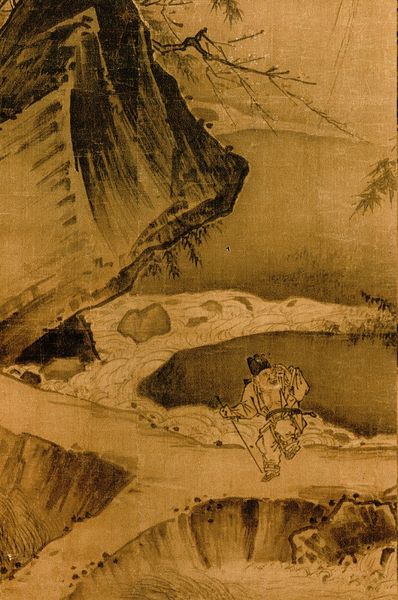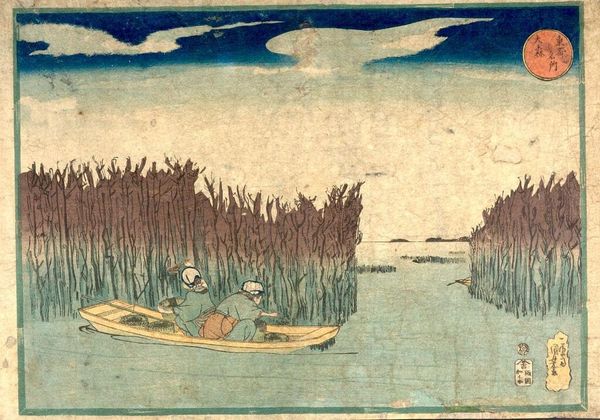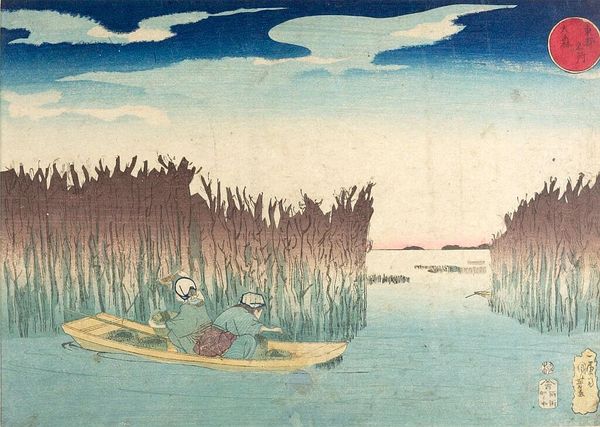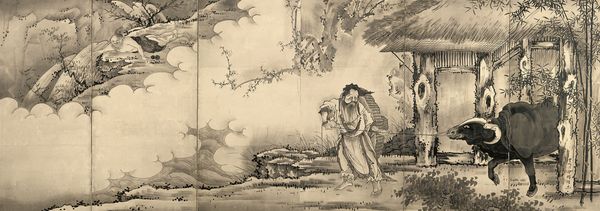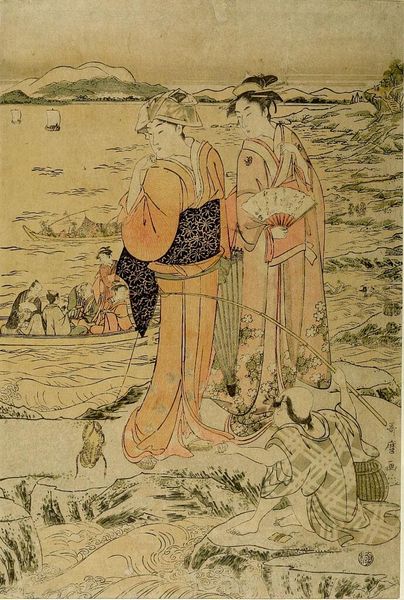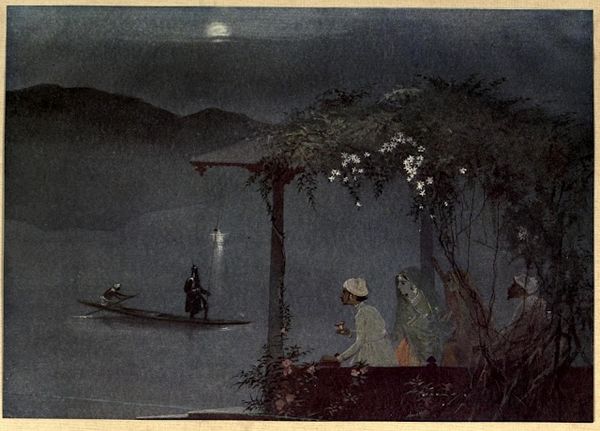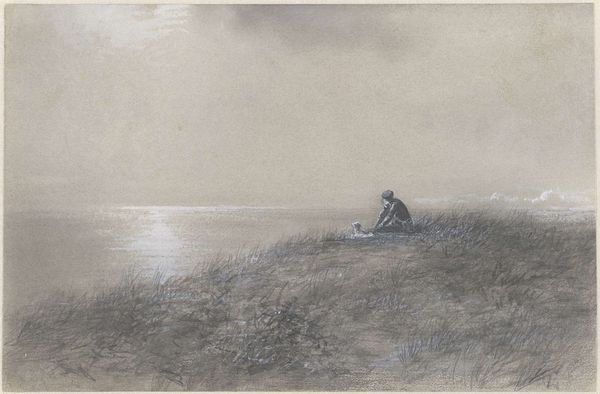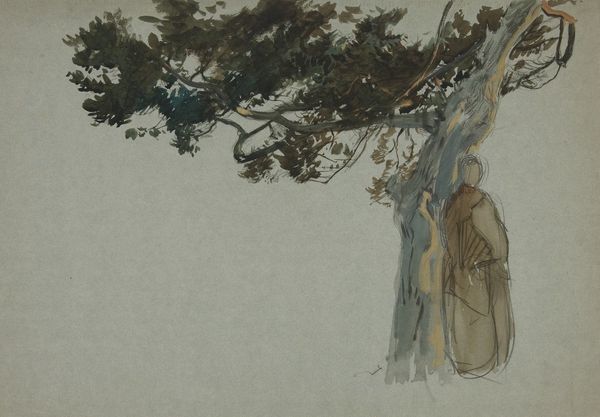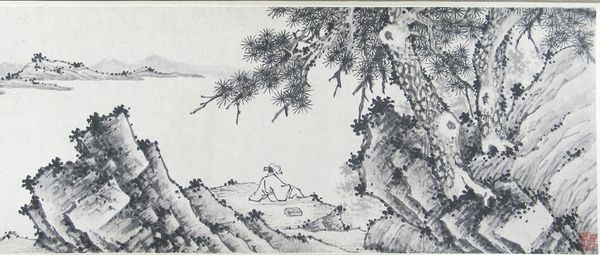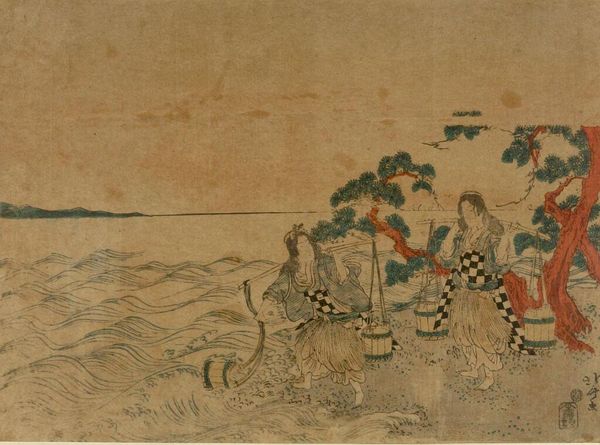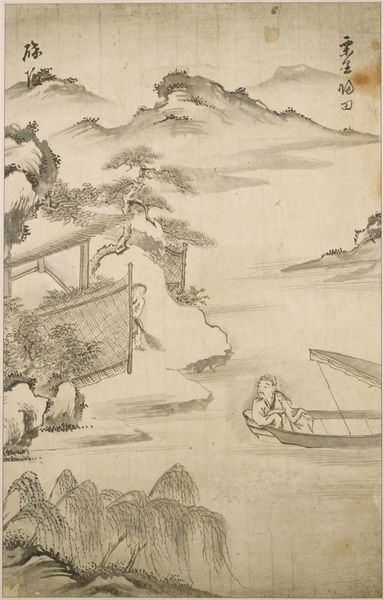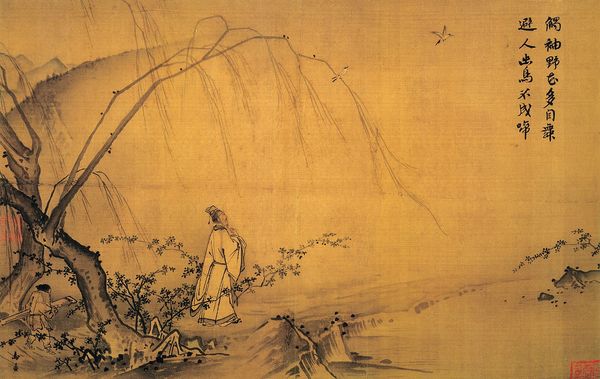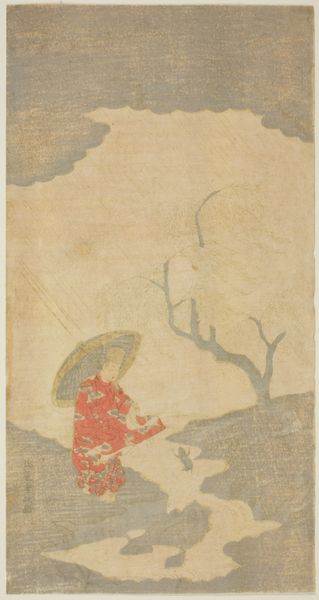
painting, watercolor
portrait
water colours
painting
asian-art
landscape
watercolor
coloured pencil
mixed media
miniature
watercolor
Curator: This piece, called "Nasim Bagh," is a work by Abanindranath Tagore. It presents a scene that blends landscape and portraiture, characteristic of his approach. Editor: It's quite melancholic. The palette is very muted, mostly earth tones. It gives a sense of stillness, almost as if time is suspended. The composition centres on this figure seated against a sparse landscape. Curator: Tagore was pivotal in the Bengal School of Art, reacting against Western academic art styles and promoting indigenous techniques and aesthetics. His influence reshaped the public’s engagement with Indian art. Editor: Looking closely, I'm drawn to the surface itself. You can really see the marks of the watercolor, the texture of the paper. It feels intimate, handmade, like a page lifted directly from the artist’s sketchbook. How the color wash has different intensities, it has the sense of chance and the skilled hand coming together. Curator: Nasim Bagh references Mughal garden design which Abanindranath combined with Japanese wash techniques he adapted for an Indian context. This synthesis shows the global exchange in artmaking during the colonial era. The garden as a metaphor of idealized peace certainly resonated with anti-colonial thinkers at the time. Editor: That makes sense given the sociopolitical circumstances of its production. It's an interesting push and pull between an intimate aesthetic and this backdrop of a political climate and global exchange, one that questions existing norms. Curator: Indeed. By engaging with these global influences, Tagore helped to reimagine and re-establish an identity in Indian art. This landscape offers insight into cultural politics and artistic resistance during the Raj. Editor: Seeing this artwork reminds us that even in the most contemplative and simple scenes, we can often find layers of complexity tied to materiality and material conditions that reshape society. Curator: Ultimately, the artwork presents a compelling historical viewpoint on Indian nationalist discourse and artistic identity formation in the early 20th century.
Comments
No comments
Be the first to comment and join the conversation on the ultimate creative platform.
